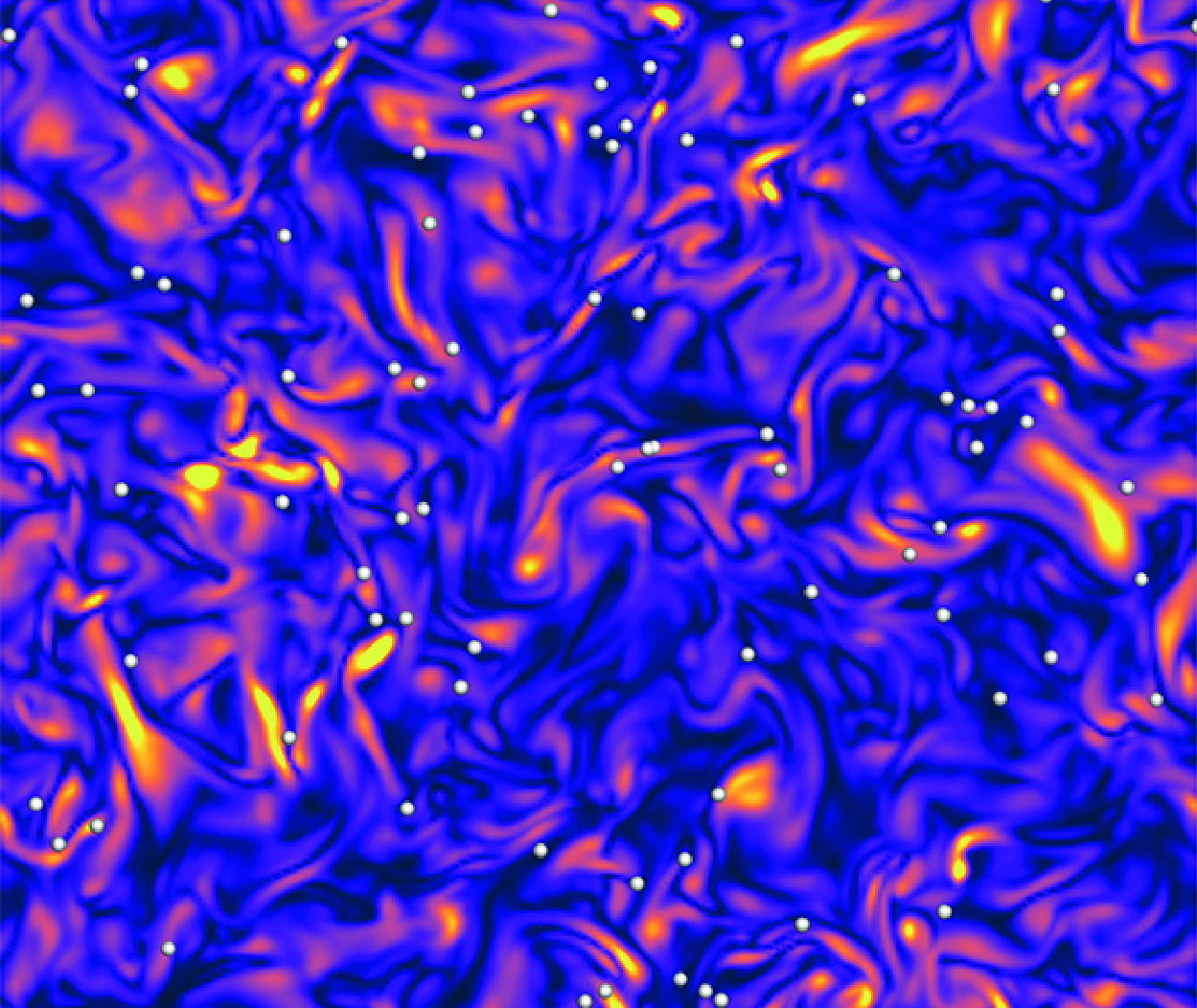No CrossRef data available.
Published online by Cambridge University Press: 13 June 2025

The settling dynamics of finite size, slightly heavier-than-fluid Kolmogorov-scale particles in homogeneous, isotropic turbulence at moderate volume loadings is investigated. A thoroughly validated two-way-coupled, point-particle model based on the complete Maxey–Riley–Gatignol equation of motion is used with closure models for all forces, including the history force, together with corrections for the self-disturbance field created by the particle using a novel zonal-advection-diffusion-reaction method. Settling dynamics is investigated by varying turbulence intensities relative to the particle settling speed in quiescent flow for multiple Stokes numbers. The length scales associated with the turbulence structures that strongly interact with and influence the settling dynamics are investigated using multiscale statistical analysis of the fluid velocity and second invariant of the velocity gradient tensors sampled by the particles. The time scales are investigated using trajectory curvature angle statistics of inertial and fluid particles. Low-to-moderate Stokes number particles tend to sample strain-rate dominated regions of the flow, tend to follow the curvature of the flow paths and show enhanced settling at higher turbulence intensities due to fast tracking and preferential sampling. Higher Stokes number particles, on the other hand, have a tendency to travel in straight lines relative to the flow and result in reduced settling speeds due to loitering. For the low mass loadings considered in this work, there is minimal global effect on the turbulent flow characteristics; however, it is found that the Kolmogorov-scale particles interact with and locally modify flow structures approximately twice their size, whereas they sample flow velocities from scales up to ten times the particle size, influencing preferential sampling and settling characteristics.